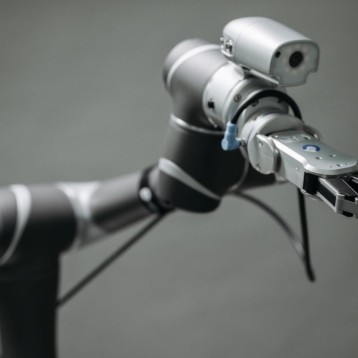The robot stands on both ends of its narrow, cylindrical body. As it expands, both ends of the body extend outward. The front end remains anchored when the robot contracts, moving the entire structure slightly forward. This motion, resembling that of an inchworm, is the result of a Belousov-Zhabotinskii, or BZ, reaction, a form of a non-linear chemical oscillator. This type of oscillator is particularly interesting because, unlike a traditional oscillator, it remains far from equilibrium for a long time.
Unlike mechanical or electronic robots which are restricted by controlling the robot directly, this chemical robot is managed by controlling its environment. The growth and shrinkage of the robot is manipulated by the presence of ruthenium bipyridine ions. The ions and the gel alternately exchange electrons causing the cyclic reactions of the oscillator. This effect has been known to exist for some time, but in the past the reactions have been minor in comparison to the size of the gel. The additional tension added to this incarnation makes stronger reactions possible, permitting true self-locomotion (in laboratory conditions).
Lead researcher Shingo Maeda is working on a similar gel that will lie flat and use peristaltic motion instead of the current contraction-stepping mode of movement. While this technology is far from any type of commercial usage at the moment, Maeda believes that this chemical motion could be used in conjunction with more traditional electronic components to create more efficient practical robots in the future.
TFOT has previously reported on a variety of other biomimetic robots including a jumping robot modeled after the grasshopper, the GhostSwimmer swimming robot based on the bluefin tuna, a miniature spy plane, the design of which was inspired by bats, an amphibious swimming and crawling robot based on a snake, and a climbing robot also modeled after a snake, capable of crawling over high stairs and other obstacles.
Read more about these early chemical robots at the chemical robotics page at the Shuji Hashimoto Laboratory website and in the abstract of a recent paper published in Advanced Robotics.










